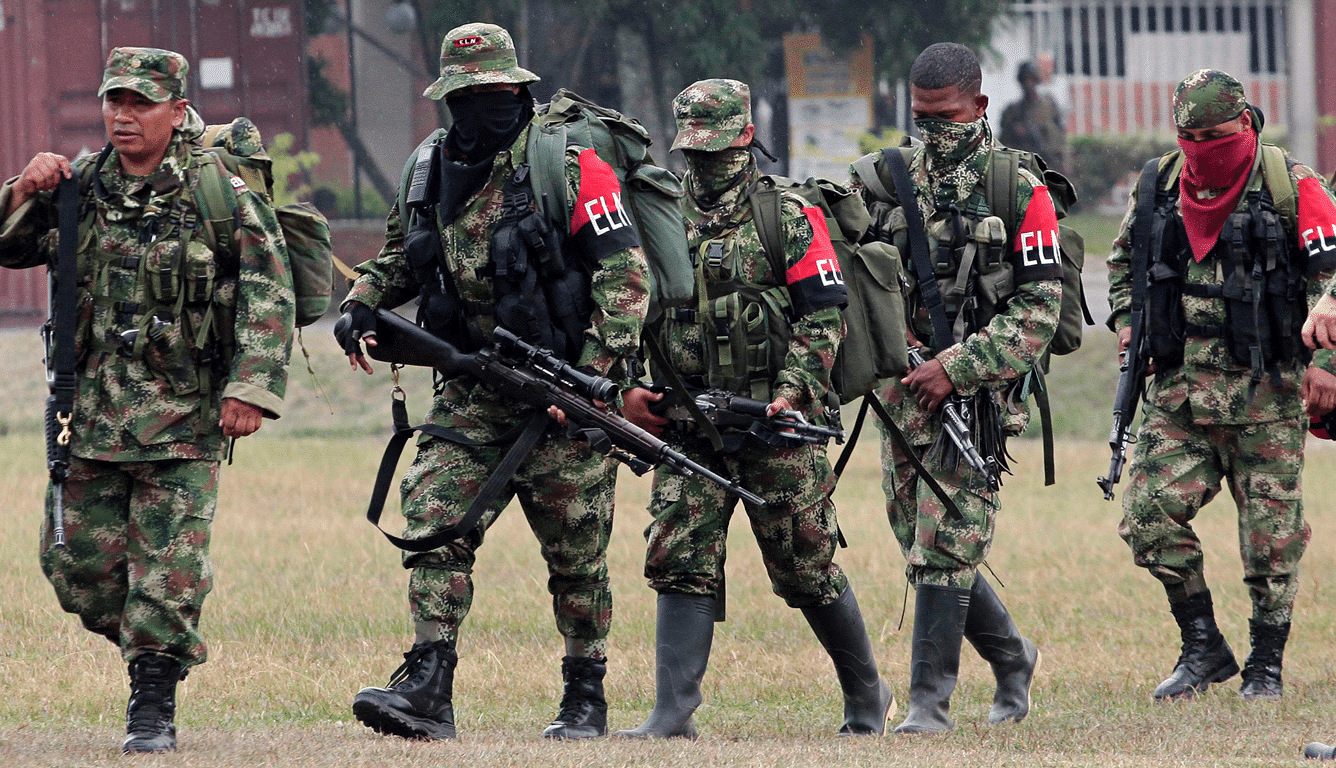Recent ELN attacks against the Venezuela military in the state of Amazonas and civilian miners in the state of Bolívar reflect the Colombian guerrilla group’s growing power and add to a series of events during 2018 that demonstrate its presence in at least half of the country.
On November 4, Colombia’s National Liberation Army (Ejército de Liberación Nacional – ELN) attacked the Bolivarian National Guard (Guardia Nacional Bolivariana – GNB) in the Venezuelan state of Amazonas, leaving three officers dead and 10 wounded. The attack was in response to the arrest of four ELN members, including one of the group’s top leaders, Luis Felipe Ortega Bernal, alias “Garganta,” who has an Interpol blue notice issued against him.
When they arrested Garganta, authorities found several identification documents in his possession. One of them was a form of identification used by Venezuelan citizens to obtain government-subsidized services, in this case under the false name of Gabriel Alfonso Ariza Suárez.
The attack — one of the most significant confrontations between the ELN and Venezuelan forces in recent years — elicited a statement from Colombia’s foreign ministry, while Venezuelan Defense Minister Vladimir Padrino only managed a delayed and noncommittal tweet on social media. He denounced the presence of any armed group in the country, never mentioning the ELN as the criminal organization that perpetrated the violent act.

(Click image to enlarge)
Padrino also took the opportunity to criticize the “inability of the Colombian government to control its [criminal] groups, violence and drug trafficking.” However, InSight Crime identified the presence of the ELN in 12 states in Venezuela — roughly half the country — by examining media reports detailing the guerrilla group’s activities in Venezuelan territory in 2018, as well as through non-governmental agency reports and information provided from official sources along the border.
SEE ALSO: ELN Profile
Based on the information InSight Crime gathered, the ELN could have a presence in the states of Táchira, Zulia, Apure, Trujillo, Anzoátegui, Lara Falcón, Amazonas, Barinas, Portuguesa, Guárico and Bolívar. Activities the group allegedly engages in include cattle smuggling, gasoline smuggling, extortion, food distribution, radio stations, recruitment of minors, attacks on security officials, drug trafficking and illegal mining.
Before the November 4 attack, the ELN allegedly perpetrated another deadly attack on October 14, in which seven people were killed in the town of Domingo Sifontes. The town is situated in Venezuela’s most extensive mining region, where the government is implementing the Orinoco Mining Arc project.
InSight Crime Analysis
ELN units have managed to advance nearly 1,500 kilometers from the Colombian border with Venezuela’s Táchira state, where the group has historically entered the country, to states that border Guyana and Brazil, such as Bolívar and Amazonas, and to coastal states like Anzoátegui and Falcón. That the ELN is present in half of Venezuela is a testament both to its continued military prowess and to just how far it has come in its expansion into President Nicolás Maduro’s Venezuela without any major obstacles to speak of.
Towns like Atures in Amazonas state, José Gregorio Monagas in Anzoátegui and Domingo Sifontes in Bolívar have seen guerrilla presence and control over area mines to the point where some indigenous communities have left total control of public order in the hands of the ELN.
Residents of the town of Catatumbo in Venezuela’s Zulia state as well as journalists have confirmed that the ELN and another Colombian guerrilla group, the dissidence of the Popular Liberation Army (Ejército Popular de Liberación – EPL), have taken their ongoing conflict from Colombia into their territory on the Venezuelan side of the border. The expanding conflict has caused displacement and the deaths of civilians and military personnel.
The Venezuelan government, however, has so far kept silent about these events.
According to Venezuelan NGO Fundación Redes, the ELN could be receiving support from Venezuela’s armed forces in the form of weapons and entry into Venezuela. It has also been alleged that the military helped the ELN to integrate with communities in Táchira, for example, by allowing the group to distribute the Venezuelan government’s subsidized food via its Local Storage and Production Committees (Comités Locales de Abastecimiento y Producción – CLAP).
Meanwhile, radio stations, pamphlet distribution in schools, control points on rural roads and extortion (demanding 10 percent of production) in the mines have aided the ELN in gaining territory and power in Venezuela and, perhaps more importantly, the resources it uses to continue financing its criminal activities.
SEE ALSO: Venezuela: A Mafia State?
The ELN’s expansion in Venezuela has been marked by the Maduro administration’s inaction and even encouragement towards the group. One illustration of this is the government’s decision to send Garganta, who was arrested in Amazonas state, to a military prison in Caracas intended for political and military prisoners.
At the same time, however, the guerrilla group’s presence in Venezuela has led Colombian President Iván Duque to intensify his pressure on the ELN by refusing to participate in peace negotiations if it continues its illegal activities.
Venezuela is the perfect place for an ELN retreat as it seeks protection from political hostilities in Colombia, expands its operations and fills out its ranks with victims of the country’s economic crisis. Given such favorable circumstances, Venezuela’s mafia state status is icing on the cake for Colombia’s most powerful guerrilla group.

